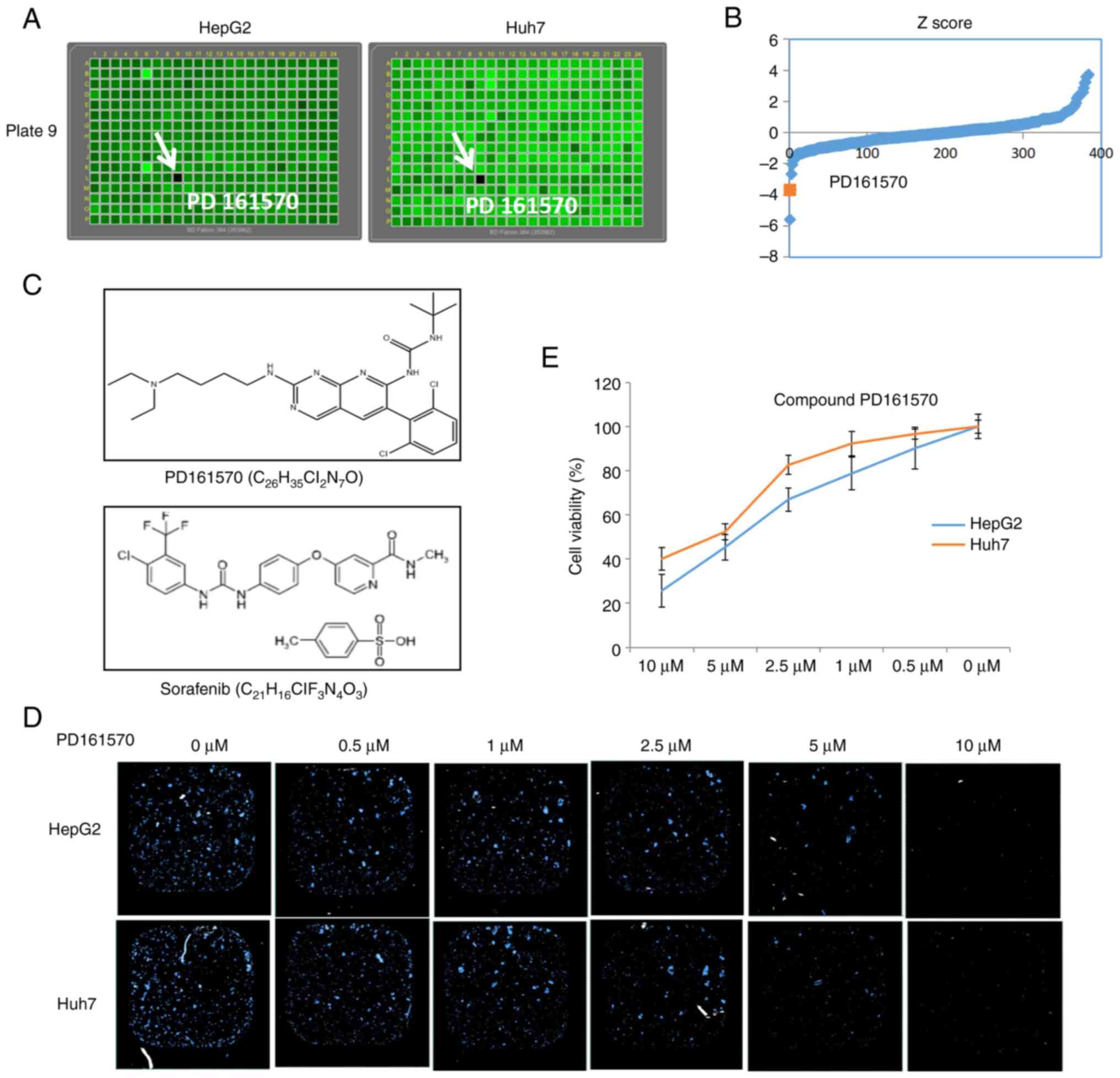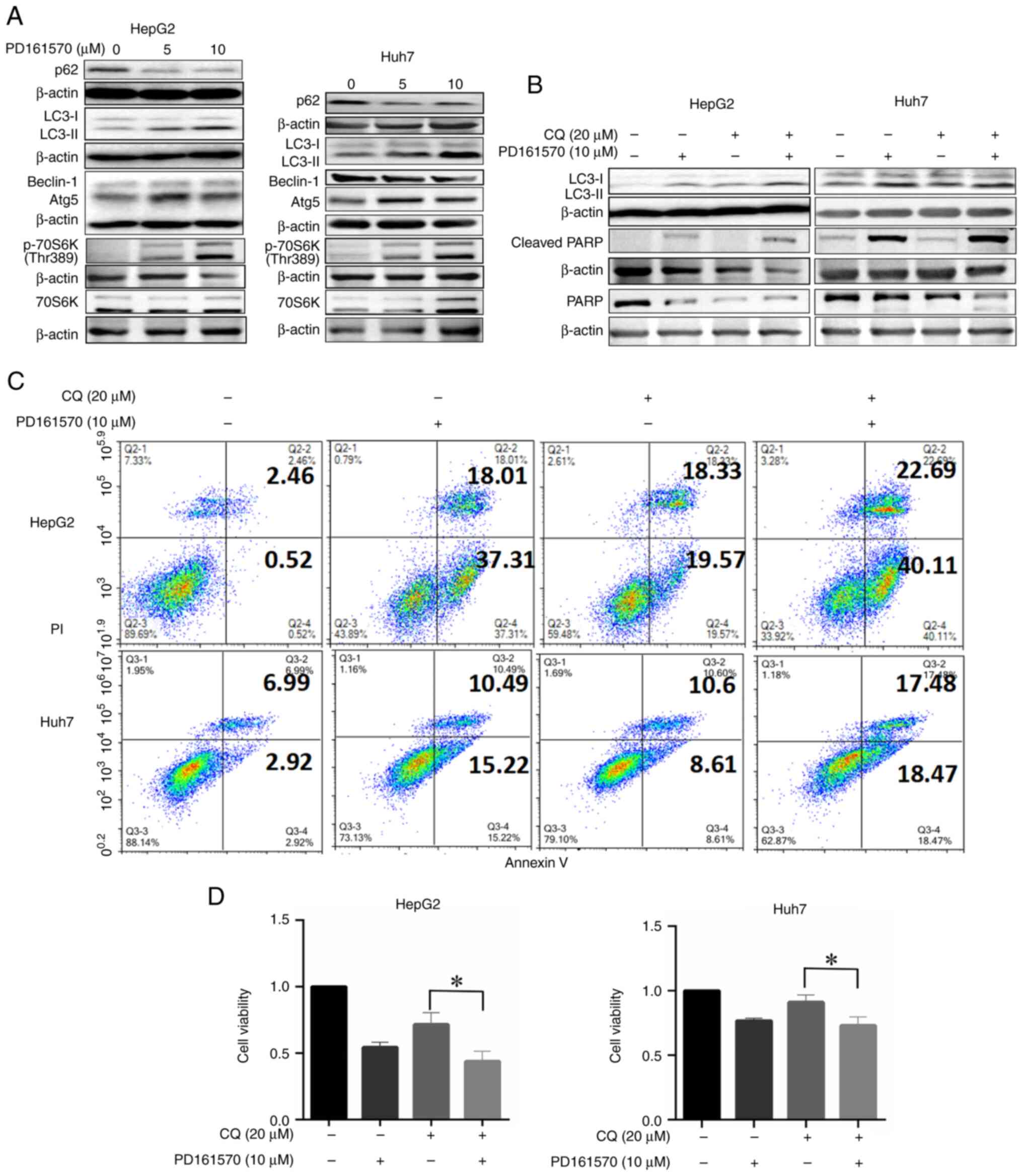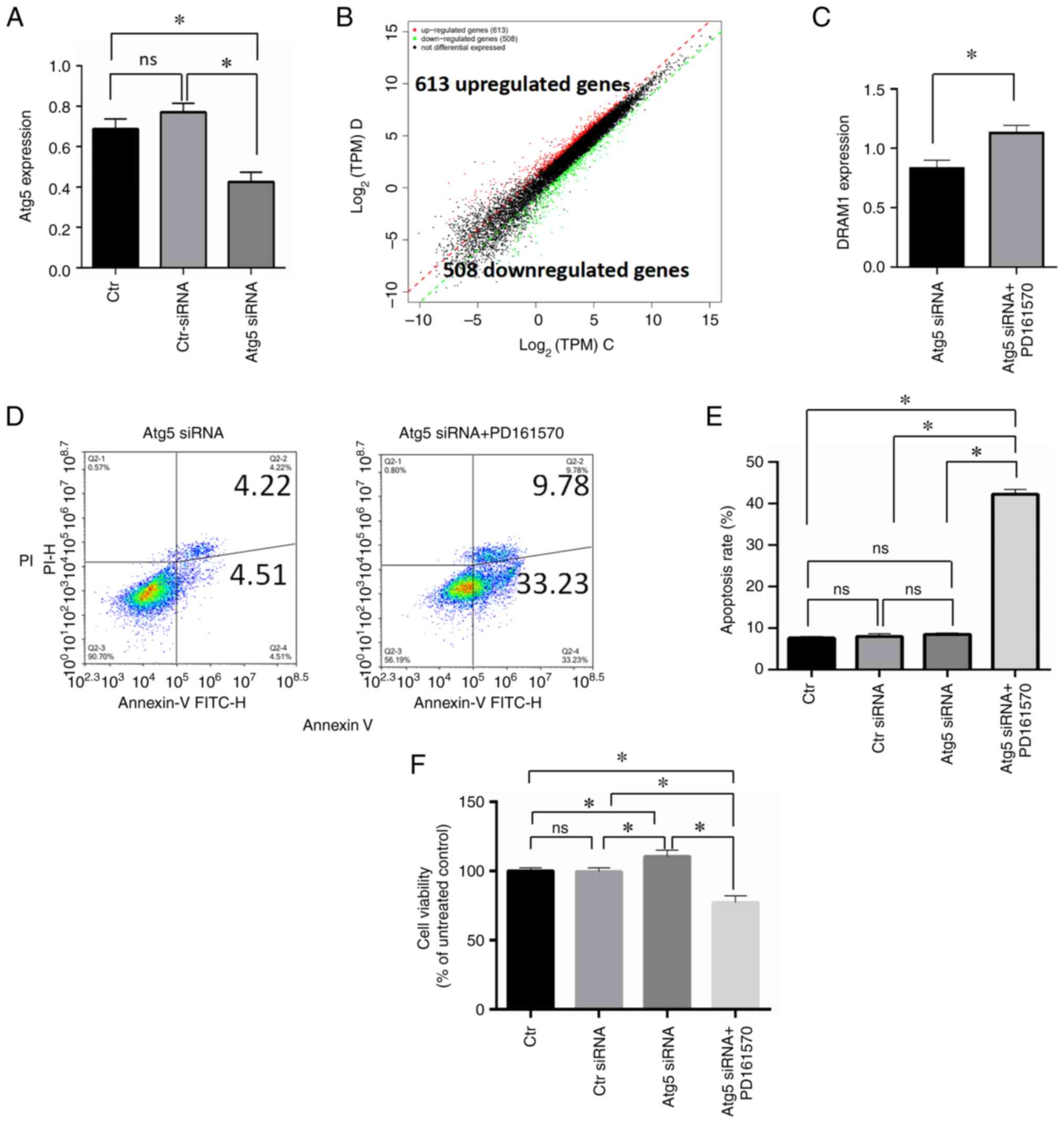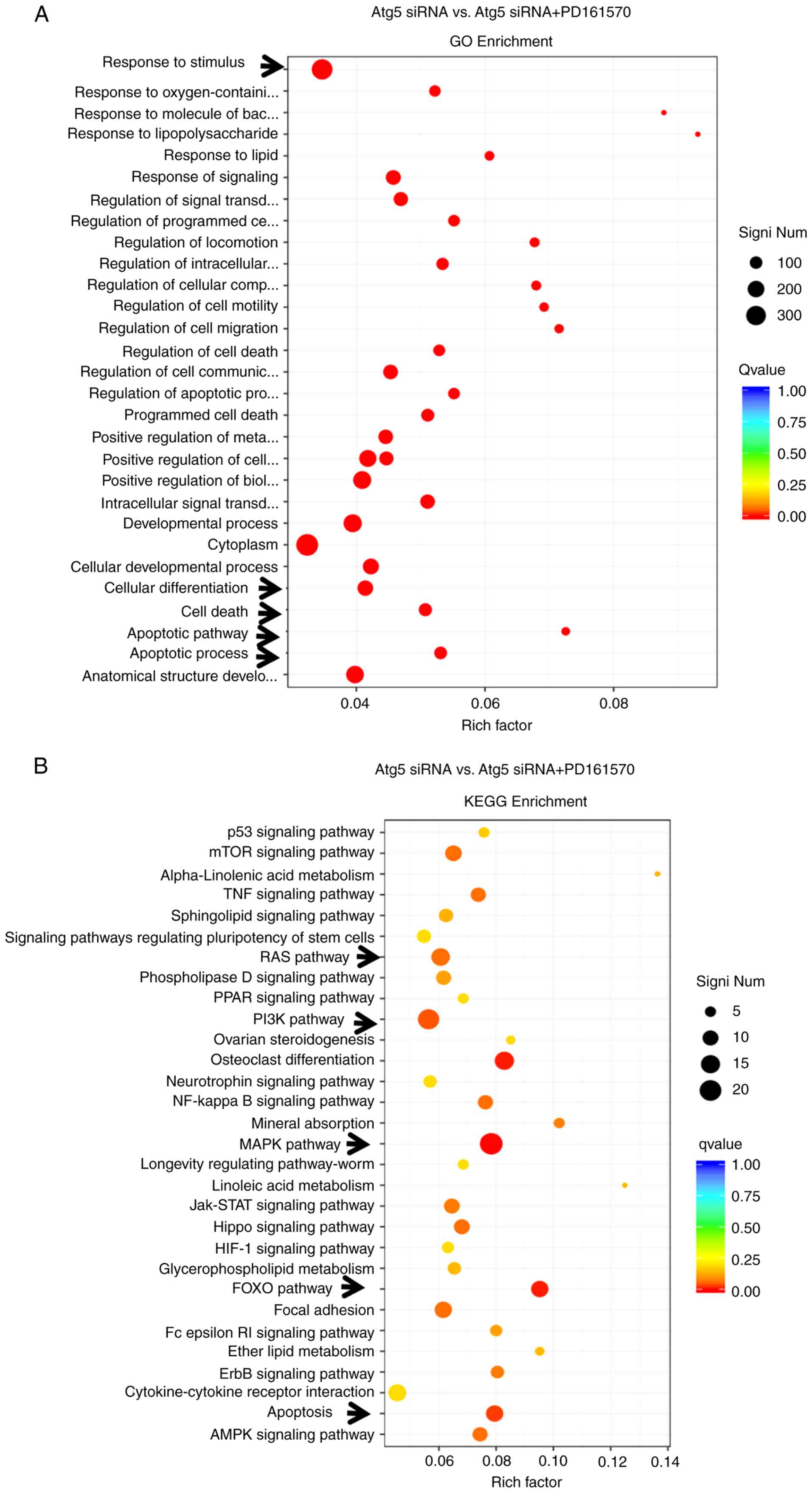|
1
|
Song P, Tang W, Tamura S, Hasegawa K,
Sugawara Y, Dong J and Kokudo N: The management of hepatocellular
carcinoma in Asia: a guideline combining quantitative and
qualitative evaluation. Biosci Trends. 4:283–287. 2010.PubMed/NCBI
|
|
2
|
Frenette C and Gish R: Targeted systemic
therapies for hepatocellular carcinoma: Clinical perspectives,
challenges and implications. World J Gastroenterol. 18:498–506.
2012. View Article : Google Scholar : PubMed/NCBI
|
|
3
|
Mandlik DS, Mandlik SK and Choudhary HB:
Immunotherapy for hepatocellular carcinoma: Current status and
future perspectives. World J Gastroenterol. 29:1054–1075. 2023.
View Article : Google Scholar : PubMed/NCBI
|
|
4
|
Luo X, He X, Zhang X, Zhao X, Zhang Y, Shi
Y and Hua S: Hepatocellular carcinoma: Signaling pathways, targeted
therapy and immunotherapy. MedComm (2020). 5:e4742024. View Article : Google Scholar : PubMed/NCBI
|
|
5
|
Feng MY, Chan LL and Chan SL: Drug
treatment for advanced hepatocellular carcinoma: First-line and
beyond. Curr Oncol. 29:5489–5507. 2022. View Article : Google Scholar : PubMed/NCBI
|
|
6
|
Richards KN, Zweidler-McKay PA, Van Roy N,
Speleman F, Trevino J, Zage PE and Hughes DP: Signaling of ERBB
receptor tyrosine kinases promotes neuroblastoma growth in vitro
and in vivo. Cancer. 116:3233–3243. 2010. View Article : Google Scholar : PubMed/NCBI
|
|
7
|
Hussain S, Mursal M, Verma G, Hasan SM and
Khan MF: Targeting oncogenic kinases: Insights on FDA approved
tyrosine kinase inhibitors. Eur J Pharmacol. 970:1764842024.
View Article : Google Scholar : PubMed/NCBI
|
|
8
|
Rosenzweig SA: Acquired resistance to
drugs targeting tyrosine kinases. Adv Cancer Res. 138:71–98. 2018.
View Article : Google Scholar : PubMed/NCBI
|
|
9
|
Livak KJ and Schmittgen TD: Analysis of
relative gene expression data using real-time quantitative PCR and
the 2(−Delta Delta C(T)) Method. Methods. 25:402–408. 2001.
View Article : Google Scholar : PubMed/NCBI
|
|
10
|
Hashemi M, Nadafzadeh N, Imani MH, Rajabi
R, Ziaolhagh S, Bayanzadeh SD, Norouzi R, Rafiei R, Koohpar ZK,
Raei B, et al: Targeting and regulation of autophagy in
hepatocellular carcinoma: revisiting the molecular interactions and
mechanisms for new therapy approaches. Cell Commun Signal.
21:322023. View Article : Google Scholar : PubMed/NCBI
|
|
11
|
Chao X, Qian H, Wang S, Fulte S and Ding
WX: Autophagy and liver cancer. Clin Mol Hepatol. 26:606–617. 2020.
View Article : Google Scholar : PubMed/NCBI
|
|
12
|
Akkoc Y and Gozuacik D: Autophagy and
liver cancer. Turk J Gastroenterol. 29:270–282. 2018. View Article : Google Scholar : PubMed/NCBI
|
|
13
|
Di Fazio P and Matrood S: Targeting
autophagy in liver cancer. Transl Gastroenterol Hepatol. 3:392018.
View Article : Google Scholar : PubMed/NCBI
|
|
14
|
Tanida I, Minematsu-Ikeguchi N, Ueno T and
Kominami E: Lysosomal turnover, but not a cellular level, of
endogenous LC3 is a marker for autophagy. Autophagy. 1:84–91. 2005.
View Article : Google Scholar : PubMed/NCBI
|
|
15
|
Pankiv S, Clausen TH, Lamark T, Brech A,
Bruun JA, Outzen H, Øvervatn A, Bjørkøy G and Johansen T:
p62/SQSTM1 binds directly to Atg8/LC3 to facilitate degradation of
ubiquitinated protein aggregates by autophagy. J Biol Chem.
282:24131–24145. 2007. View Article : Google Scholar : PubMed/NCBI
|
|
16
|
Kabeya Y, Mizushima N, Ueno T, Yamamoto A,
Kirisako T, Noda T, Kominami E, Ohsumi Y and Yoshimori T: LC3, a
mammalian homologue of yeast Apg8p, is localized in autophagosome
membranes after processing. EMBO J. 19:5720–5728. 2000. View Article : Google Scholar : PubMed/NCBI
|
|
17
|
Kabeya Y, Mizushima N, Yamamoto A,
Oshitani-Okamoto S, Ohsumi Y and Yoshimori T: LC3, GABARAP and
GATE16 localize to autophagosomal membrane depending on form-II
formation. J Cell Sci. 117:2805–2812. 2004. View Article : Google Scholar : PubMed/NCBI
|
|
18
|
Pullen N and Thomas G: The modular
phosphorylation and activation of p70s6k. FEBS Lett. 410:78–82.
1997. View Article : Google Scholar : PubMed/NCBI
|
|
19
|
Xie B, He X, Guo G, Zhang X, Li J, Liu J
and Lin Y: High-throughput screening identified mitoxantrone to
induce death of hepatocellular carcinoma cells with autophagy
involvement. Biochem Biophys Res Commun. 521:232–237. 2020.
View Article : Google Scholar : PubMed/NCBI
|
|
20
|
Horakova D, Cela P, Krejci P, Balek L,
Moravcova Balkova S, Matalova E and Buchtova M: Effect of FGFR
inhibitors on chicken limb development. Dev Growth Differ.
56:555–572. 2014. View Article : Google Scholar : PubMed/NCBI
|
|
21
|
Stevens DA, Harvey CB, Scott AJ, O'Shea
PJ, Barnard JC, Williams AJ, Brady G, Samarut J, Chassande O and
Williams GR: Thyroid hormone activates fibroblast growth factor
receptor-1 in bone. Mol Endocrinol. 17:1751–1766. 2003. View Article : Google Scholar : PubMed/NCBI
|
|
22
|
Batley BL, Doherty AM, Hamby JM, Lu GH,
Keller P, Dahring TK, Hwang O, Crickard K and Panek RL: Inhibition
of FGF-1 receptor tyrosine kinase activity by PD 161570, a new
protein-tyrosine kinase inhibitor. Life Sci. 62:143–150. 1998.
View Article : Google Scholar : PubMed/NCBI
|
|
23
|
Biyanee A, Yusenko MV and Klempnauer KH:
Src-Family protein kinase inhibitors suppress MYB activity in a
p300-dependent manner. Cells. 11:11622022. View Article : Google Scholar : PubMed/NCBI
|
|
24
|
Jaboin JJ, Shinohara ET, Moretti L, Yang
ES, Kaminski JM and Lu B: The role of mTOR inhibition in augmenting
radiation induced autophagy. Technol Cancer Res Treat. 6:443–447.
2007. View Article : Google Scholar : PubMed/NCBI
|
|
25
|
Rubinsztein DC, Gestwicki JE, Murphy LO
and Klionsky DJ: Potential therapeutic applications of autophagy.
Nat Rev Drug Discov. 6:304–312. 2007. View
Article : Google Scholar : PubMed/NCBI
|
|
26
|
Botti J, Djavaheri-Mergny M, Pilatte Y and
Codogno P: Autophagy signaling and the cogwheels of cancer.
Autophagy. 2:67–73. 2006. View Article : Google Scholar : PubMed/NCBI
|
|
27
|
Repici M, Mariani J and Borsello T:
Neuronal death and neuroprotection: A review. Methods Mol Biol.
399:1–14. 2007. View Article : Google Scholar : PubMed/NCBI
|
|
28
|
Yan L, Liu C, Zhai Z, Ren G and Qiu S: A
review of research progress on the mechanisms of programmed nerve
cell death. Altern Ther Health Med. 30:68–72. 2024.PubMed/NCBI
|
|
29
|
Liu W, Jin W, Zhu S, Chen Y and Liu B:
Targeting regulated cell death (RCD) with small-molecule compounds
in cancer therapy: A revisited review of apoptosis,
autophagy-dependent cell death and necroptosis. Drug Discov Today.
27:612–625. 2022. View Article : Google Scholar : PubMed/NCBI
|
|
30
|
Xie SB, He XX and Yao SK: Matrine-induced
autophagy regulated by p53 through AMP-activated protein kinase in
human hepatoma cells. Int J Oncol. 47:517–526. 2015. View Article : Google Scholar : PubMed/NCBI
|
|
31
|
Xie BS, He XX, Ai ZL and Yao SK:
Involvement of β-catenin in matrine-induced autophagy and apoptosis
in WB-F344 cells. Mol Med Rep. 9:2547–2553. 2014. View Article : Google Scholar : PubMed/NCBI
|
|
32
|
Xi H, Wang S, Wang B, Hong X, Liu X, Li M,
Shen R and Dong Q: The role of interaction between autophagy and
apoptosis in tumorigenesis (Review). Oncol Rep. 48:2082022.
View Article : Google Scholar : PubMed/NCBI
|
|
33
|
D'Arcy MS: Cell death: A review of the
major forms of apoptosis, necrosis and autophagy. Cell Biol Int.
43:582–592. 2019. View Article : Google Scholar : PubMed/NCBI
|
|
34
|
Park W, Wei S, Kim BS, Kim B, Bae SJ, Chae
YC, Ryu D and Ha KT: Diversity and complexity of cell death: A
historical review. Exp Mol Med. 55:1573–1594. 2023. View Article : Google Scholar : PubMed/NCBI
|
|
35
|
Liu K, Lou J, Wen T, Yin J, Xu B, Ding W,
Wang A, Liu D, Zhang C, Chen D and Li N: Depending on the stage of
hepatosteatosis, p53 causes apoptosis primarily through either
DRAM-induced autophagy or BAX. Liver Int. 33:1566–1574. 2013.
View Article : Google Scholar : PubMed/NCBI
|
|
36
|
Takahashi M, Kakudo Y, Takahashi S,
Sakamoto Y, Kato S and Ishioka C: Overexpression of DRAM enhances
p53-dependent apoptosis. Cancer Med. 2:1–10. 2013. View Article : Google Scholar : PubMed/NCBI
|
|
37
|
Crighton D, Wilkinson S and Ryan KM: DRAM
links autophagy to p53 and programmed cell death. Autophagy.
3:72–74. 2007. View Article : Google Scholar : PubMed/NCBI
|
|
38
|
Chen C, Liang QY, Chen HK, Wu PF, Feng ZY,
Ma XM, Wu HR and Zhou GQ: DRAM1 regulates the migration and
invasion of hepatoblastoma cells via autophagy-EMT pathway. Oncol
Lett. 16:2427–2433. 2018.PubMed/NCBI
|
|
39
|
Wu X, Qin Y, Zhu X, Liu D, Chen F, Xu S,
Zheng D, Zhou Y and Luo J: Increased expression of DRAM1 confers
myocardial protection against ischemia via restoring autophagy
flux. J Mol Cell Cardiol. 124:70–82. 2018. View Article : Google Scholar : PubMed/NCBI
|
|
40
|
Chang I, Majid S, Saini S, Zaman MS,
Yamamura S, Chiyomaru T, Shahryari V, Fukuhara S, Deng G, Dahiya R
and Tanaka Y: Hrk mediates 2-methoxyestradiol-induced mitochondrial
apoptotic signaling in prostate cancer cells. Mol Cancer Ther.
12:1049–1059. 2013. View Article : Google Scholar : PubMed/NCBI
|
|
41
|
Kaya-Aksoy E, Cingoz A, Senbabaoglu F,
Seker F, Sur-Erdem I, Kayabolen A, Lokumcu T, Sahin GN,
Karahuseyinoglu S and Bagci-Onder T: The pro-apoptotic Bcl-2 family
member Harakiri (HRK) induces cell death in glioblastoma
multiforme. Cell Death Discov. 5:642019. View Article : Google Scholar : PubMed/NCBI
|
|
42
|
Nakamura M, Shimada K and Konishi N: The
role of HRK gene in human cancer. Oncogene. 27 (Suppl 1):S105–S113.
2008. View Article : Google Scholar : PubMed/NCBI
|
|
43
|
Dave H, Trivedi S, Shah M and Shukla S:
Transforming growth factor beta 2: A predictive marker for breast
cancer. Indian J Exp Biol. 49:879–887. 2011.PubMed/NCBI
|


















